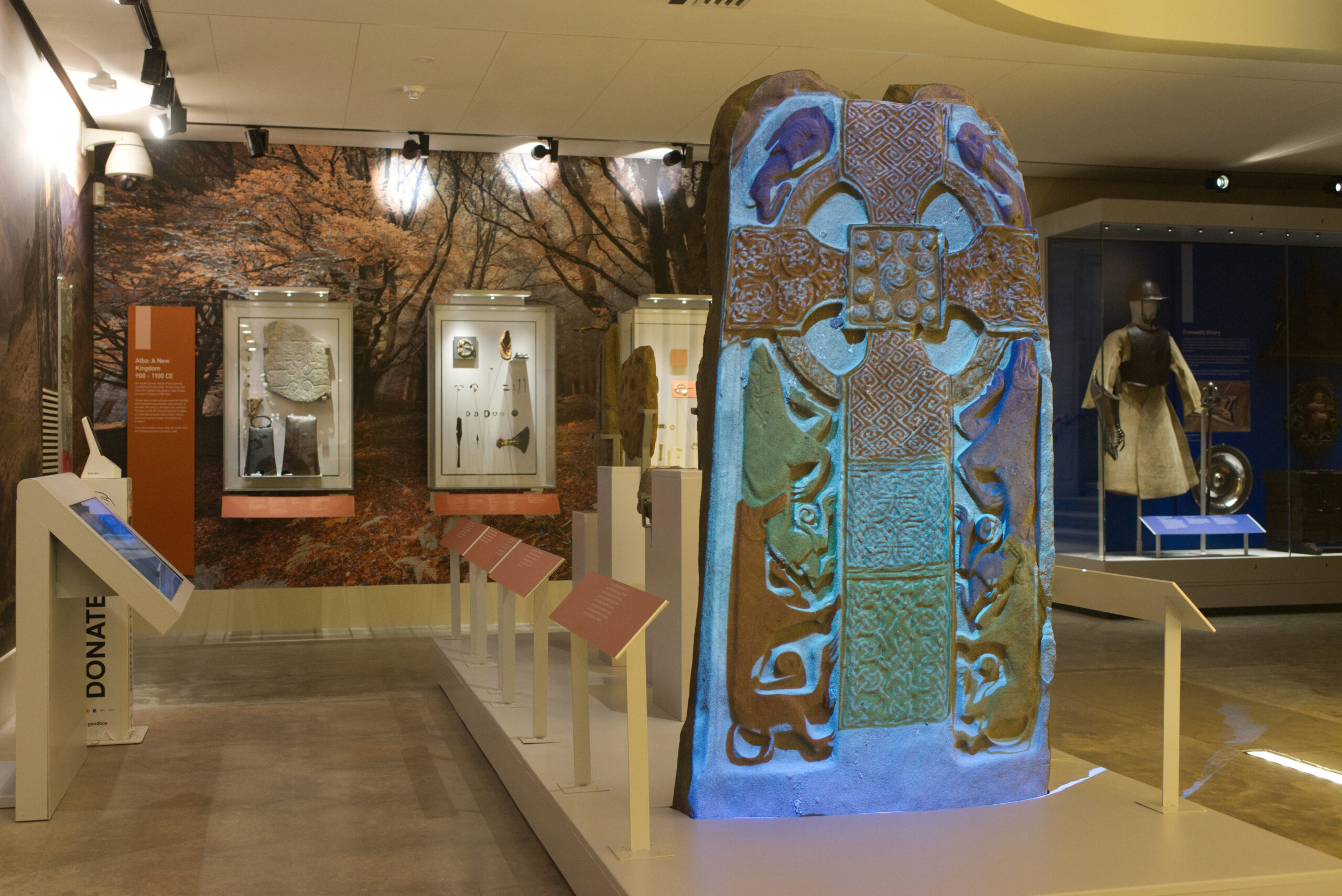Enter a search term above to search our website
Pages
News
Star Objects
A magnificent piece of early medieval sculpture, the Pictish St Madoes cross-slab, dates to the eighth century AD. Its imagery powerfully symbolises the authority of the Christian church. The whole is dominated by the ring-headed cross that fills what we can accept as the front of the slab. It is surrounded by biting dogs and with two lion-like creatures facing each other across the top of the stone.
The back of the slab shows three cloaked and hooded riders, probably churchmen (possibly a reference to the road and its users between St Andrews and Scone) and below them three Pictish symbols: a crescent and v-rod, a double-disc and z-rod and a Pictish beast. The symbols are much worn due to exposure to the elements when it stood in St Madoes churchyard. In 1991 the stone was conserved and moved to what is now Perth Art Gallery.
In the first thousand years AD, the country we now call Scotland was dominated by changing groups of Celtic peoples, most notably the Picts. From AD 250-900, they controlled most of Scotland north of the River Forth. We do not know what they called themselves. The Picts – meaning “the painted ones” – is the name the Romans gave them. Their language has disappeared and no Pictish manuscripts are known to have survived. But their art does survive on over 300 pieces of carved stonework and a much smaller number of portable objects such as jewellery.
